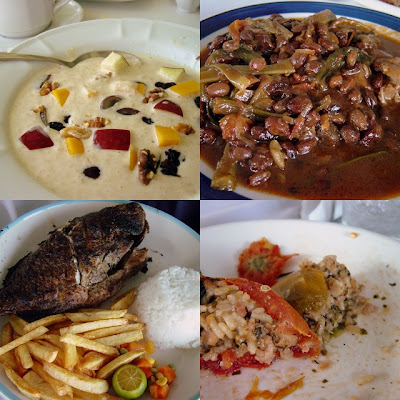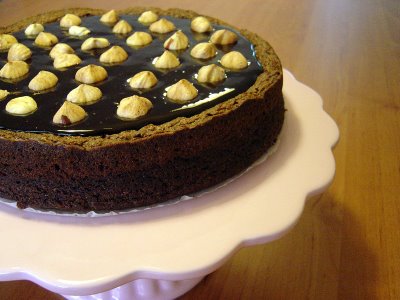
Driving back from Tagaytay last weekend, C & I stopped by one of the many roadside stands to buy a pineapple. It’s hard to resist the pineapples in Tagaytay. Primarily because, well, they’re good, and secondly because you see fields of them everywhere, their wild crowns peeking out of the ground. This makes it especially hard to stop thinking about having one. So we stopped and I picked one out. C shot me a dubious look, “That’s really hard to peel.” The indignation! Did he think I could not peel a pineapple?! “I know how to peel a pineapple!” I shot back. Was he questioning my domestic-island-goddess capabilities?!
Back home found me peeling away, muttering over the pineapple, “I can peel you…I can peel you!” I held up the peeled and quartered pieces up to C, “See, there you go!” Domestic-island-goddess status restored.
Do you want to know a secret? That was the first time I ever peeled one! Hah!!! Sometimes, when skill fails, you just have to muster enough cheek to act like a domestic goddess. And sometimes it helps to have Saveur issue 96 where they teach you how to peel a pineapple.
My pineapple peeling redemption
(care of Saveur Magazine issue 96, page 79)
- Slice of the pineapple's crown and then slice of about a half inch of the bottom, and then stand upright.
- Trim the rind off by slicing the fruit’s exterior (don’t go deeper then ¼ inch). Follow the fruit’s shape when slicing.
- Cut out any black “eyes” that remain.
- Slice the pineapple into 4, lengthways.
- Slice of the core end of each quarter.
- At this point you can cut the quarters into cubes, or slice them again lengthways into thinner slices.
Voila!

We usually just eat pineapple straight from the fridge…the slices icy cold and sweet. I wanted to try something new this time, and there was a Jamie Oliver recipe that intrigued me. I came upon it in The Accidental Foodie by Neale Whitaker, and had seen it on the internet a couple of times…enough to pique my interest. It’s blazingly simple and, I discovered after trying it, surprisingly good. It’s called, in adorable Jamie-fashion, Pukka Pineapple with Bashed-Up Mint Sugar. All you have to do is get your pineapple quarters (as above) and slice them lengthways as thin as you can manage. Lay them on a serving platter then get on with the bashing of your mint sugar (bash the sugar right before serving, so if you aren't going to serve it yet just set pineapple aside first). In a mortar and pestle, put some caster (superfine) sugar and some mint leaves (Jamie says 4 tablespoons sugar to a handful of fresh mint) and start bashing! Jamie suggests doing the bashing at the table to create a little “theatre”. Bash until sugar turns green and the mint scent wafts up…the smell is divine! Sprinkle mint-sugar on the pineapple slices and enjoy with some natural yogurt. This is one of those recipes that sound almost too simple that you can’t really see what the fuss is about…until you try it. The flavor pairing of the pineapple and the mint, with the added sweetness of the sugar, is just so very right. And with the arrival (finally!) of good, thick yogurt on my shores, the whole dessert leaves me gloriously content to the tips of my toes!
note: if you live in Manila and are looking for good, thick, creamy yogurt try Lemnos brand (natural/no flavor) sold in S&R at the Fort. I have also seen it in some Rustan’s Supermarket outlets. It is the thickest I’ve found, and, save flying to Greece to get the real thing, is enough to satisfy my cravings for Greek-style yogurt. It comes in a 2-kilo bucket but it is so worth it. I could have this for breakfast for days on end. It also makes the best raitas and tzazikis, and I can’t wait to try it in cakes. Eat it, cook with it, top it on anything…this yogurt rocks!











